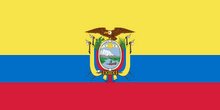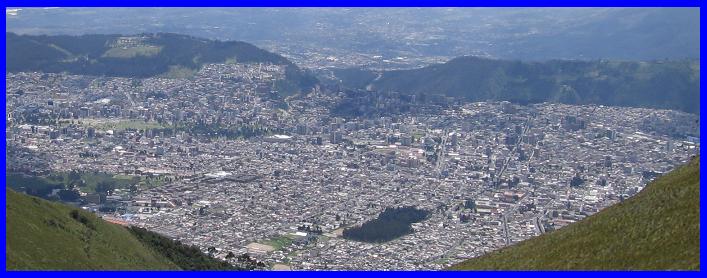
This natural mound is named so because of its similarity to a small rounded loaf of bread. Erected in the middle of the city, it is a natural window through which to view the beautiful Andes Mountains.
The mound received its name from the Spanish conquerors, but is believed that its authentic name is "Shungoloma" that in Quichua means "hill of the heart." In the time of the Incas, there was a temple erected to Yavirac, the Sun God. This temple was destroyed by the Indian Rumiñahui while resisting the advance of Spanish troops.
At 3000 meters above sea level, the hill is a reference point for the citizens of Quito as it marks the division between the south and the center of the city. The Incan story is remembered because the Pot of the Roll is found on the site. The Pot is a type of cistern, eight meters in depth, which was used for the irrigation of the valley.
Years later, during the Spanish domination, the place served to collect rain water destined for the irrigation of the gardens of the Spanish mansion Bellavista and then was utilized as a place of defense of the colonial troops during the libertarian battle of Pichincha May 24, 1822.
In 1976, the Spanish artist Augustine of the Herrán Matorras carried out in aluminum the monument to the Virgin Mary that is found in the peak of the hill. It is composed of seven thousand pieces and is considered as the largest representation of aluminum of the world. The work is a replica of the sculpture of thirty centimeters carried out in the 18th century by the sculptor quiteño Bernardo of Legarda that rests in the baroque convent of the Church of San Francisco.
In the lower part of the monument to the Virgin, through the small square access window, the opening of the Pot can be seen. Also seen is part of the path that visitors to the monument utilize to view the city and its surroundings.
To visit the monument in a vehicle, visitors can travel the avenue Melchor Aymerich, the only way that connects it with the dome.
On the Roll, visitors can breathe in the Andean air that inspired illustrious poets while
The mound received its name from the Spanish conquerors, but is believed that its authentic name is "Shungoloma" that in Quichua means "hill of the heart." In the time of the Incas, there was a temple erected to Yavirac, the Sun God. This temple was destroyed by the Indian Rumiñahui while resisting the advance of Spanish troops.
At 3000 meters above sea level, the hill is a reference point for the citizens of Quito as it marks the division between the south and the center of the city. The Incan story is remembered because the Pot of the Roll is found on the site. The Pot is a type of cistern, eight meters in depth, which was used for the irrigation of the valley.
Years later, during the Spanish domination, the place served to collect rain water destined for the irrigation of the gardens of the Spanish mansion Bellavista and then was utilized as a place of defense of the colonial troops during the libertarian battle of Pichincha May 24, 1822.
In 1976, the Spanish artist Augustine of the Herrán Matorras carried out in aluminum the monument to the Virgin Mary that is found in the peak of the hill. It is composed of seven thousand pieces and is considered as the largest representation of aluminum of the world. The work is a replica of the sculpture of thirty centimeters carried out in the 18th century by the sculptor quiteño Bernardo of Legarda that rests in the baroque convent of the Church of San Francisco.
In the lower part of the monument to the Virgin, through the small square access window, the opening of the Pot can be seen. Also seen is part of the path that visitors to the monument utilize to view the city and its surroundings.
To visit the monument in a vehicle, visitors can travel the avenue Melchor Aymerich, the only way that connects it with the dome.
On the Roll, visitors can breathe in the Andean air that inspired illustrious poets while










No comments:
Post a Comment